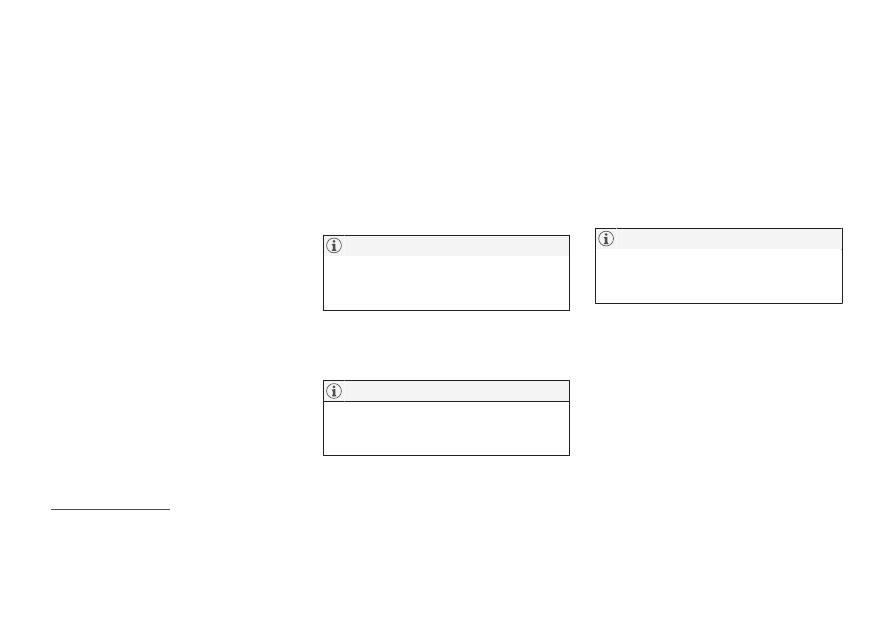Volvo S60 Cross Country (2018 year). Manual - part 8

CLIMATE CONTROL
* Option/accessory.
140
Additional heater*
In cold climate zones
5
an additional heater may
be required to obtain the correct operating tem-
perature in the engine and to obtain sufficient
heating in the passenger compartment.
A fuel-driven additional heater (p. 140) is fitted
in cars with diesel engines.
In a semi-cold
5
climate zone diesel-driven cars
have an electric additional heater (p. 141)
instead of a fuel-driven version.
Cars with certain petrol engines
6
have an electric
additional heater integrated into the car's climate
control system.
Related information
•
Engine block heater and passenger compart-
ment heater
Fuel-driven additional heater*
The car is equipped with either an electric
(p. 141) or a fuel-driven additional heater
(p. 140).
The heater starts automatically when extra heat is
required when the engine is running.
The heater is switched off automatically when the
correct temperature is reached or when the
engine is switched off.
When the additional heater is active there
may be smoke from the right-hand wheel
housing, which is perfectly normal.
Auto mode or shutdown
The additional heater's automatic start sequence
can be switched off if required.
Volvo recommends that the fuel-driven addi-
tional heater should be switched off for short
distances.
1. Before starting the engine: Select key posi-
2. Press OK to access the menu.
3. Scroll with the thumbwheel to
Additional
heater
7
or
Settings
8
and select with OK.
4. Select one of the options
ON
or
OFF
using
the thumbwheel and confirm with OK.
5. Exit the menu with RESET.
The menu options are only visible in key posi-
tion I - any adjustments must therefore be
made before starting the engine.
Passenger compartment heater
*
If the additional heater is supplemented with a
timer function then it can be used as a passen-
ger compartment heater (p. 134).
5
An authorised Volvo dealer has information regarding the geographical areas concerned.
6
An authorised Volvo dealer has information regarding the engines concerned.
7
Analogue combined instrument panel.
8
Digital combined instrument panel.